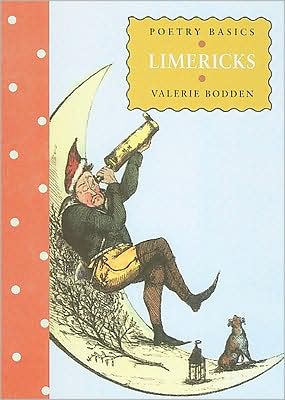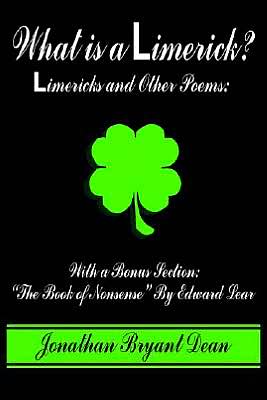Limericks
Search in google:
\ VOYA - Barbara Johnston\ Bodden dedicates a separate volume to four categories of poetry in this series—Haiku, Nursery Rhymes, Limericks, and Concrete Poetry. Poetry began thousands of years ago with ordinary people wanting to tell a story, share images in a fresh way, or create some deep emotion. Each book explains the purpose of its particular form, describes its evolution, gives many examples, and then challenges the reader to "Think Like a Poet" by providing two creative exercises. Every page captures attention with a dramatic photograph or a richly colored and often humorous illustration to reinforce the enjoyment poetry offers. The illustration accompanying the limerick about the lady with the long pointed chin shows her using it to play a harp. Beautifully printed on glossy paper in a large font, the text is concise and easy to understand. The purpose of the poetry discussed in Limericks is to present an amusing situation in a short rhyming verse. Limericks may be written about almost everything, including well-known people and current events. These five-line poems follow a definite rhyme scheme of a/a/b/b/a, with a pattern of stressed syllables making them fun to read. Sometimes an unexpected plot twist at the end adds to the joke. Poets also compose other nonsense poems about things that could not happen and they may even invent words. "Jabberwocky" from Lewis Carroll's book Through the Looking-Glass and What Alice Found There contains many original portmanteau words such as "slithy," a combination of slimy and lithe. Although each volume contains only thirty-two pages and resembles a children's picture book in appearance and tone, its deceptive simplicityeffectively teaches the "bones" of poetry. This series would appeal to younger children, middle school students, or budding poets. Reviewer: Barbara Johnston\ \ \ \ \ Children's Literature - Marcie Flinchum Atkins\ Limericks are poems that appeal to children and this book spends time explaining the history and mechanics of limericks to young writers. This book is part of the "Poetry Basics" series. It begins by explaining what poetry is and why people write it. Edward Lear popularized the limerick and made it accessible to children. Several limericks are shown throughout the book and help to illustrate the information about limericks explained on the page. Examples of rhyming word pairs and stressed syllables are explained so that the young writer can apply them in their own writing. Alliteration, humor, nonsense verse, and the subject matter of limericks are also explicated. This is not a poetry anthology but a history and how-to about writing in this form. A "Think Like a Poet" section is available at the back of the book and gives exercises for poets to try their hand at limericks. Vintage illustrations are shown throughout the book and help to illustrate the history of the limerick. Books for further reading, a glossary, bibliography, and an index are included in the back matter. This series would make an excellent addition to a writing reference collection in a classroom or library. Reviewer: Marcie Flinchum Atkins\ \ \ School Library JournalGr 5-7–These books provide clear, concise introductions to “accessible poetry.” They open with histories of their genres–for example, Concrete Poetry explains that the form began with ancient Greek poets. The representative poems are not child-friendly; one is by the 17th-century poet George Herbert and some are in other languages and not translated. The books also discuss composition mechanics and reader reactions and provide numerous examples. In Haiku, Bodden notes that the poetry evokes a sensory experience and offers this well-chosen quote: “Snow-silenced trees/shake heavy limbs–/a wet plop.” Each book has an attractive design, with plenty of white space and lovely, though unidentified, illustrations. A few black-and-white (or color tinted) photographs are scattered throughout the series; they are less successfully matched to the text. One glaring misfire in Haiku depicts people sorting through packets of mail; it accompanies a text that describes haiku’s growing popularity in Europe and America, but the connection between text and photo remains unclear. Each book includes a few simple activities. These simple introductions can be paired with collections of poetry and nursery rhymes.\ \

